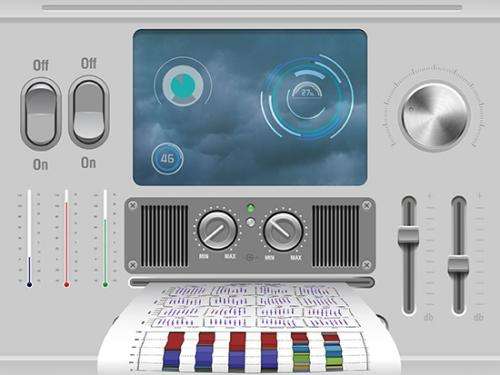Scientists determine which modeling parameters are most influential in simulating clouds

Like building a high-performance engine, the components you add to a climate model determine the quality of the finished product. A new study led by Pacific Northwest National Laboratory looked for which "tunable" variables were most influential in depicting various cloud types in a global atmospheric model. They found that different parameters influenced different types of clouds. For stratocumulus, low and clumpy clouds, the parameters that matter most appear in water and heat flux equations. For shallow cumulus, cotton-ball-like low clouds, the most influential parameters are those related to how the atmospheric vertical velocity is skewed. The study was published in the Journal of Advances in Modeling Earth Systems.
Clouds are some of the toughest atmospheric components to simulate because global climate is divided into a grid with cells that are 100 km (about 62 miles) wide. Covering much smaller spaces, clouds tend to be blurred out of that picture. Modelers use parameterizations, a computational approach to represent clouds and other small-scale processes such as turbulence, to capture the fine details. In effect, parameterizations act as a "stand in" for reality. Inside the parameterizations are many equations and parameters describing a particular characteristic or behavior of each component. Putting together the right mix of "well-tuned" parameters produces modeling results well-matched to the climate.
In this study, PNNL researchers and their collaborators at the University of Wisconsin-Milwaukee, the National Center for Atmospheric Research, and the Institute of Atmospheric Physics in Beijing used a quasi-Monte Carlo sampling approach to explore 35 parameters in a newly implemented cloud parameterization called Cloud Layers Unified By Binormals, or CLUBB. In a generalized linear model, they studied how simulated cloud fields respond to different tunable parameters. They configured one instance of stratocumulus and two of shallow cumulus clouds at coarse and fine vertical resolutions using the single-column version of the Community Atmosphere Model (CAM5) to reduce computational cost.
This study improves understanding of the newly implemented CLUBB showing that among many tunable parameters, only a handful are influential. The researchers identified different influential parameters for different types of clouds. For example, in stratocumulus, it is those parameters that appear in water and heat flux equations. In shallow cumulus, the parameters related to the skewness of vertical velocity are influential. For stratocumulus clouds, the influential parameters are also sensitive to the version resolution is used. The findings help reduce the number of tunable parameters in future studies of sensitivity and calibration in global simulations. The results show that a small subset of tunable parameters can explain most of the variance in simulated cloud fields in the single-column version of CAM5.
Scientists will use the same analysis approach demonstrated in this paper to examine the sensitivity of global CAM5 simulations to the same tunable parameters.
More information: Guo Z, M Wang, Y Qian, V Larson, P Bogenschutz, G Lin, S Ghan, M Ovchinnikov, C Zhao, and T Zhou. 2014. "A Sensitivity Analysis of Cloud Properties to CLUBB Parameters in the Single Column Community Atmosphere Model (SCAM5)." Journal of Advances in Modeling Earth Systems, early view. DOI: 10.1002/2014MS000315.
Provided by Pacific Northwest National Laboratory





















